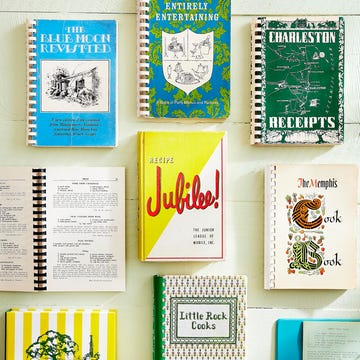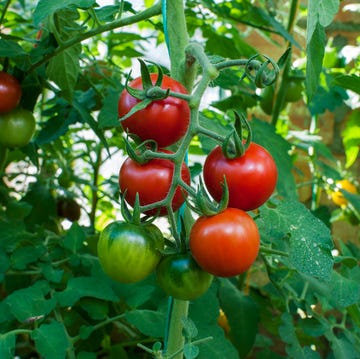I was skeptical, and unconfident, the first time I roasted a chicken. It seemed too easy: Put the chicken in a cast-iron pan, put it in the oven. Anyone could do this. Could I do this?
I was living in a studio apartment in Greenwich Village, my first grownup place. I could lock the door, put a record on the turntable, drain the pasta and put more toner in the printer all standing in one spot without moving my feet.
“You can roast a chicken, and it will last you for days,” my mother had said, offering the idea. “Cook some cut-up potatoes with it. And you could quick blanch some broccoli and sauté it.” (Do what now with the broccoli?)
The chicken felt cold and weird in my hands. I rained kosher salt from the Diamond Crystal box over its skin, and I ground pepper from the plastic supermarket grinder. I shoved a lemon in the “cavity” (gross), as the recipe dictated. I don’t think I peeled the lemon or cut it or even rinsed it. Just a whole lemon up the chicken butt.
You know what? That chicken was delicious. It filled that apartment with a beautiful smell. Because I made it, it was the best roast chicken I ever tasted. And it remained so, until just now.
I’m 25 years on from that place on Sullivan Street. Two kids and several hundred roast chickens later, recently I rubbed one with a spice rub. Forty-five minutes later, the rich, warm smell in my kitchen was like no scent I had experienced in my life — and yet somehow, it was like every warm kitchen smell I had ever known. It was completely new, and yet wonderfully familiar.
It smelled like home, or a dream of home.
All I had done was prepare a four-pounder using this timeless skillet roasted chicken recipe from the Good Housekeeping Test Kitchen, lay it atop a bed of haphazardly chopped vegetables in a Lodge cast-iron pan, and blithely slide it into the oven on a Wednesday night. Oh — the rub: Pre-oven, I slathered the chicken with softened butter laced with A Good Thing For Pork & Poultry seasoning, an ethereal new collaboration between my favorite spice company, Burlap & Barrel, and my favorite Netflix documentary subject, Martha Stewart.
“Mixing dry herbs and/or spices with softened butter or oil and then rubbing it all over your chicken, making sure to get all the nooks and crannies, is a great way to add flavor,” says Kate Merker, the chief food director of the Hearst Lifestyle Group. “To boost that even more, carefully loosen the skin and stuff and rub some of that mixture right onto the meat itself.”
First, the spices: Burlap & Barrel sources single-origin spices from small, sustainable farms in more than 30 countries around the world. Many big supermarket spice brands, even organic ones, source from multiple massive farms, sometimes on different continents, and the spices sometimes then sit on ships, and sometimes the jars contain mysterious filler along with the spices, and sometimes the farmers aren’t paid enough to live, and…
These mass-market spices are fine in a pinch (heh), but there’s something better. Something not only more socially responsible, but so much more flavorful that it instantly makes you a better cook.
We all have our little indulgences (using too many paper towels, say, or getting an extra pump of caramel in the latte). And yes, a two-ounce jar of Burlap & Barrel ground coriander, sourced responsibly from a farm in Hai Duong, Vietnam, cost $8.99, while you could get a same-size jar of decent organic coriander for about $5 — or a non-organic, non-fair-trade (and sort-of-flavorful) supermarket brand for even less.
But! Anyone who cooks knows that excellent spices are not an indulgence. For one thing, Burlap & Barrel recommends using less of their spices in a recipe than you would those from other brands, because B&B’s are far more potent (and thus sneaky-economical).
“You can use less of our spices than you normally would in soups, stews, chili, rubs and things like that,” says Frisch. “Half, or even less. The flavor goes a long way. The farmers we work with have been growing these products for years, even generations — these are heirloom spices, often with lower yields, that are harder to produce, and so you taste not just the freshness but the expertise that creates something exceptional.”
Which brings us to the Martha of it all, because Martha Stewart is nothing if not exceptional. Frisch, a trained chef, had long revered Stewart because of “the role she played in the way food works in American culture.” Her team of culinary geniuses worked with Burlap’s team of spice-sourcing geniuses to calibrate the rapturous Pork & Poultry blend: wind-blown sea salt from Tanzania, Anatolian sage and oregano flower buds from Turkey, robusta black peppercorns and ground buffalo ginger from Vietnam, and limestone rosemary from France. It all adds up to an alchemy that yields a roast chicken (or pork loin) that will be the best you ever made.
“Selecting seasonings is one of the most important parts of creating a flavorful dish. While the Test Kitchen is stocked with all types of herbs and spices, we are always on the hunt for what companies have developed and perfected in their kitchens. It’s a great way to try new flavor combinations with spices from all over the world,” says Merker.
And, to avoid all that expensive international travel, you can conveniently buy it on Burlap & Barrel's website — as well as the rest of the Martha Stewart collaboration spices, A Good Thing For Chicken and Seafood and another for Beef and Lamb.















